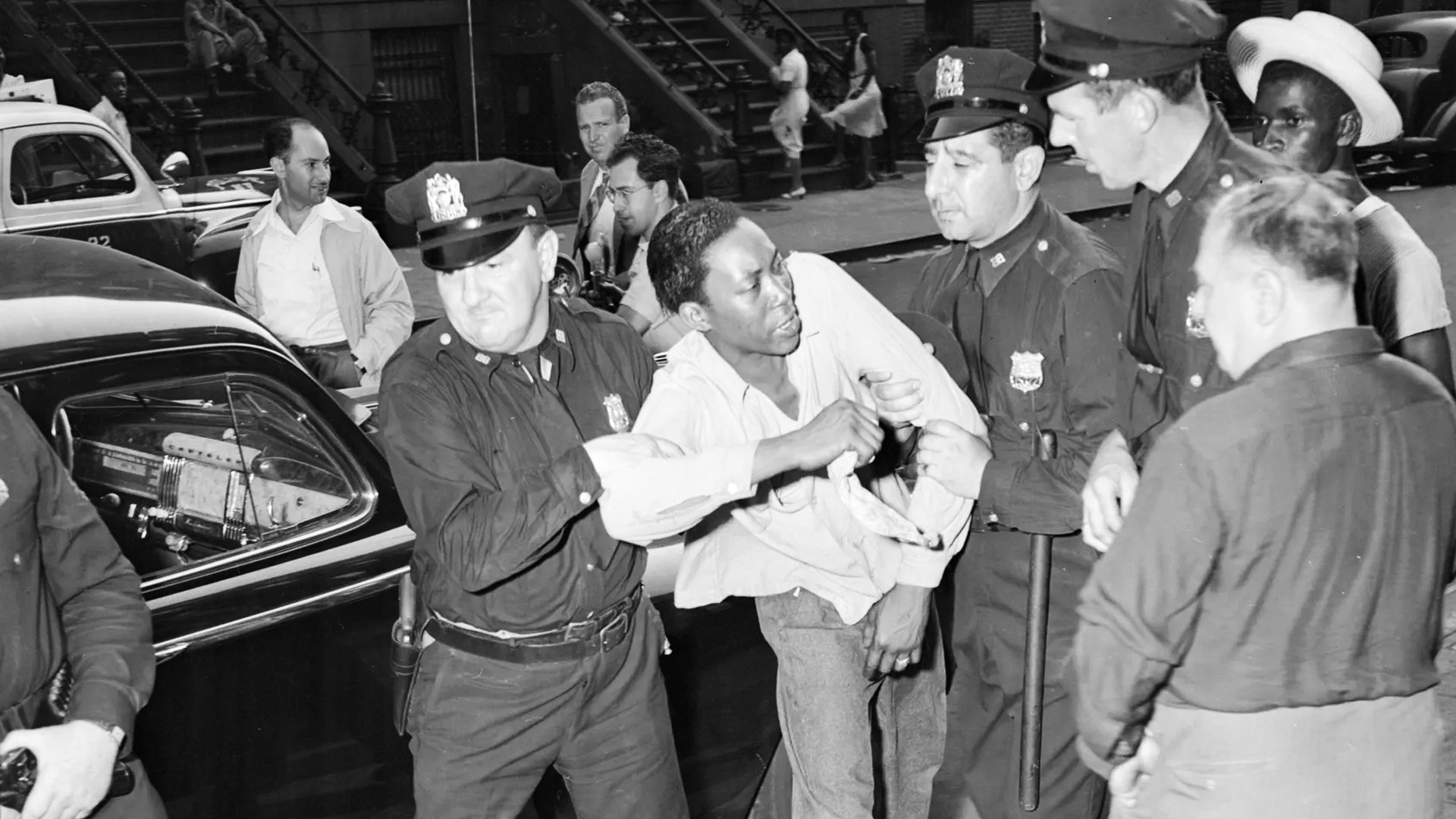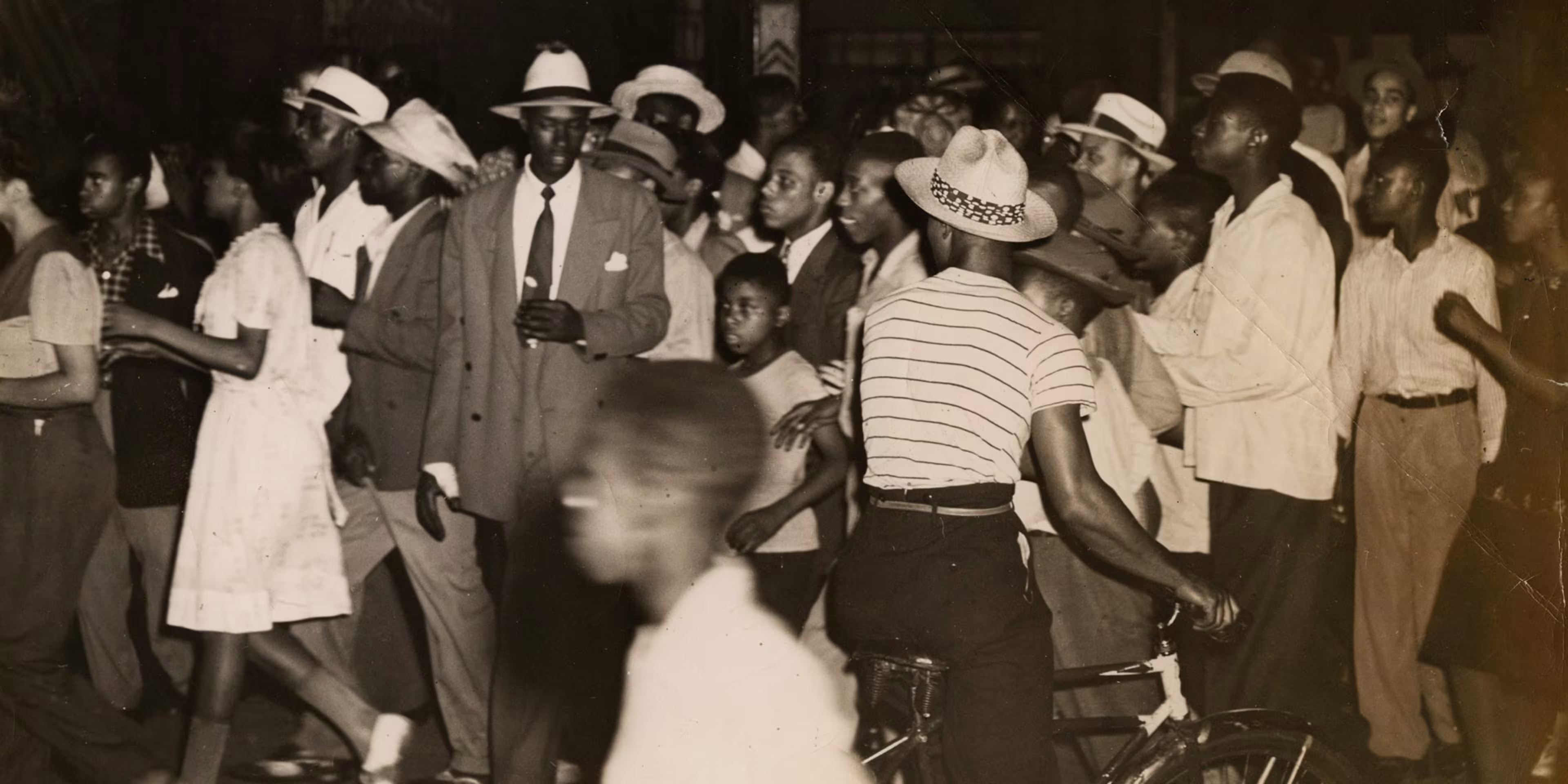The Harlem Riot of 1943: When a Shot Sparked a Firestorm

Black residents gather on Harlem streets as police patrol during the 1943 riots.
What Happened?
On a hot summer evening in 1943, Harlem turned turned hostile. In the lobby of the Braddock Hotel, a white police officer, James Collins, shot Robert Bandy, a Black military policeman. Though Bandy survived with minor injuries, a rumor quickly spread that he had been killed. That lie, fueled by truth far deeper than the bullet, set Harlem ablaze.
At the time, Harlem was home to a majority-Black population that had migrated from the South seeking opportunity and dignity. It was a neighborhood known for jazz, poetry, and resistance. But racism remained the landlord, the boss, the officer on patrol. Black residents were shut out of jobs, charged outrageous rents, and served last — if at all — by the white-owned businesses in their own neighborhood. World War II only tightened the grip: the cost of living skyrocketed, but wages and justice remained low.
As news of the shooting rippled through Harlem, so did righteous anger. Crowds gathered. Windows shattered. Stores were looted—especially those seen as symbols of exploitation. In the span of 12 hours, six Black residents were killed, nearly 500 injured, and over 500 arrested. The destruction totaled the equivalent of $5 million today, but what broke was something bigger: any illusion that Harlem was separate from the systemic racism infecting America.
Mayor Fiorello La Guardia tried to keep a lid on it. He imposed a curfew, called in 6,600 police officers and 8,000 National Guardsmen. But the anger wouldn’t be solved by silence or boots on street corners. The federal government opened a local office to investigate price gouging and enforced rent protections, a sign that some listened, but not nearly enough.
This riot wasn’t isolated. It echoed Detroit’s uprising earlier that year and foreshadowed Watts and Newark in decades to come. It was part of a pattern—a warning flare from communities fed up with injustice. For Harlem icons like James Baldwin, Malcolm X, and Langston Hughes, it was personal, formative, and unforgettable. Hughes would write: 'How long I got to fight BOTH HITLER–AND JIM CROW?'
Why It Matters
The Harlem Riot of 1943 exposed the deep contradictions of America’s wartime ideals. While Black soldiers fought fascism overseas, their families faced brutality and economic oppression at home. Harlem’s uprising wasn’t just a reaction, it was a revelation. A mirror held up to a country that promised liberty but delivered segregation. And like so many moments in the civil rights struggle, it asks us: how long must people wait for justice, and how loud must they shout to be heard?
?
Who was Robert Bandy, and why did his shooting spark such a powerful reaction in Harlem?
What economic and social conditions contributed to the uprising in Harlem in 1943?
How did World War II highlight the hypocrisy of American ideals about freedom and justice?
What role did rumors—and truths—play in spreading unrest during the Harlem Riot of 1943?
How did Mayor Fiorello La Guardia and the federal government respond to the uprising?
In what ways did the 1943 Harlem Riot connect to other uprisings like Detroit (1943), Watts (1965), or Ferguson (2014)?
How did the Harlem Riot of 1943 influence writers and leaders like James Baldwin, Langston Hughes, and Malcolm X?
What lessons can we draw today from the Harlem Riot about systemic racism, economic inequality, and protest?
Dig Deeper
Before the riot, Harlem was a cultural capital of Black America. This video explores its rich artistic legacy—and the deeper roots of the community’s resilience.
A look at the earlier Harlem Riot of 1935 and the broader historical patterns of racial injustice in policing—patterns that reemerged in 1943 and still persist today.
Related

Votes for Women: The Fight for the 19th Amendment
It took more than 70 years of protests, petitions, and picket lines to win the right for women to vote in the United States. The 19th Amendment didn’t just expand democracy—it redefined it.

Democracy: Government by the People
Democracy is more than voting every few years. It is a way of sharing power, protecting rights, and making sure ordinary people have a real voice in how they are governed.

MLK the Disrupter and the Poor People’s Campaign
Dr. Martin Luther King Jr.’s final chapter was about more than civil rights—it was a bold demand for economic justice that challenged the nation’s values at their core.
Further Reading
Stay curious!
